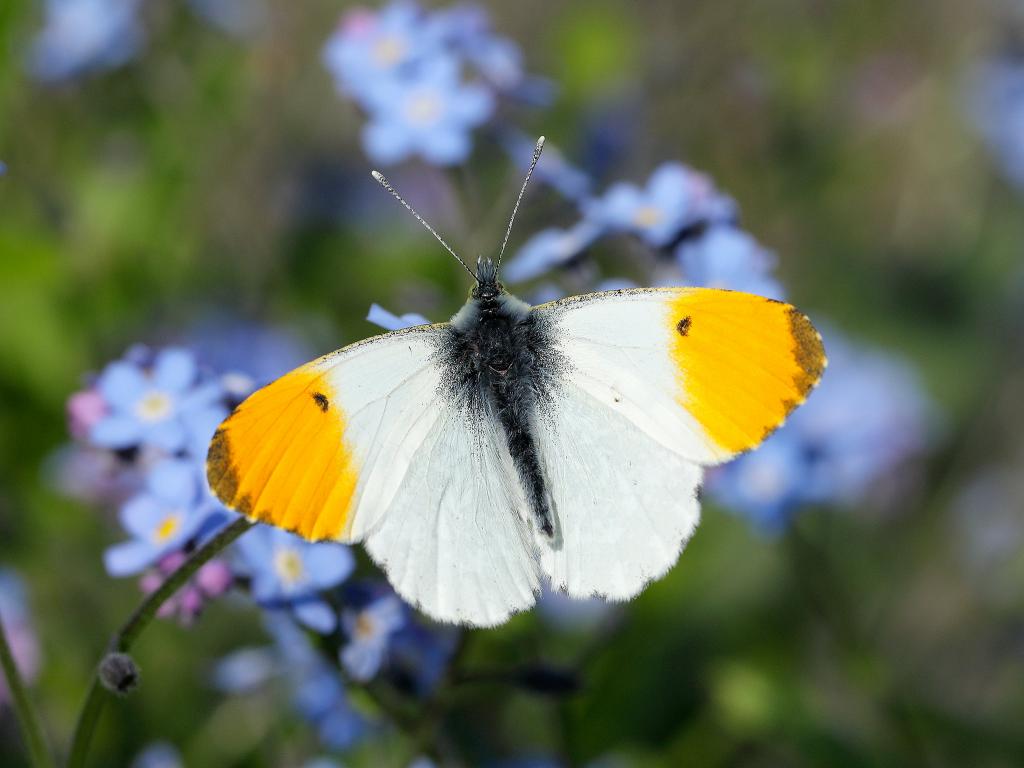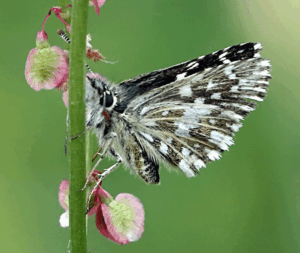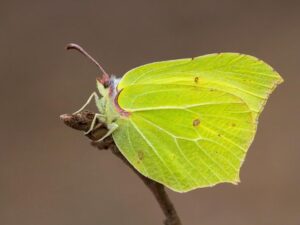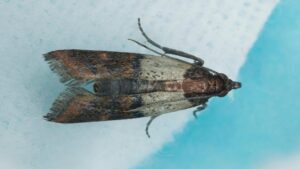Size and Family
- Family: Whites and yellows
- Size: Medium
- Wing Span Range (male to female): 45-50mm
Conservation Status
- Butterfly Conservation priority: Low
- European status: Not threatened
Caterpillar Foodplants
Several crucifers are used, especially Cuckooflower (Cardamine pratensis) in damp meadows and Garlic Mustard (Alliaria petiolata) along road verges and ditches. Occasionally, it uses Hedge Mustard (Sisymbrium officinale), Winter-cress (Barbarea vulgaris), Turnip (Brassica rapa), Charlock (Sinapis avensis), Large Bitter-cress (C. amara), and Hairy Rock-cress (Arbis hirsuta). In addition, it lays its eggs on Honesty (Lunaria annua) and Dame’s-violet (Hesperis matronalis) in gardens, but larval survival is thought to be poor on these plants.
Common and widespread, this medium-sized butterfly can be found in gardens and hedgerows.
The males are unmistakable; white butterflies with bright orange wingtips. The females are white with black wingtips. Both have mottled green underwings.
The Small White is very similar to the female but lacks the underwing markings. Discover how to identify white butterflies with this handy guide.
Habitat
Orange-tips prefer damp habitats such as meadows, woodland glades, hedgerows and the banks of streams and rivers, but readily visit gardens.
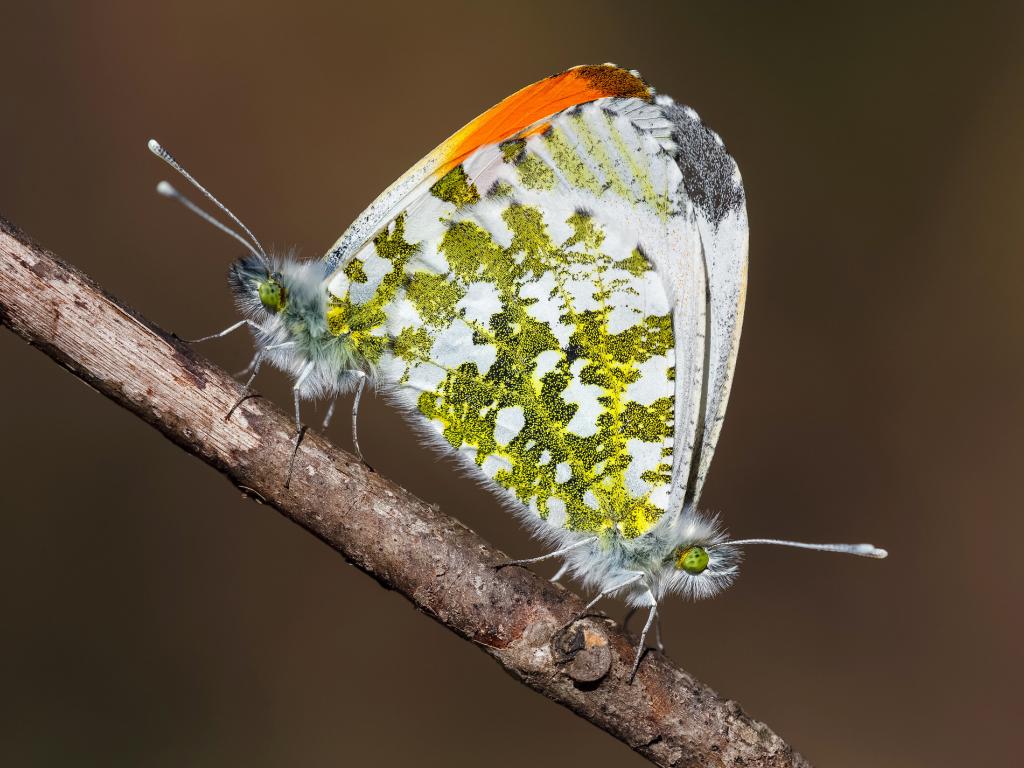
The orange-tip butterfly (Anthocharis cardamines) is a common species found throughout Europe and temperate Asia. Here are some key facts about its habitat, life cycle, and diet:
Habitat
Orange-tip butterflies prefer damp habitats such as:
- Meadows
- Woodland glades and edges
- Hedgerows
- Banks of streams and rivers
- Gardens[1][7]
They are often found in areas where their larval food plants grow, particularly near patches of cuckooflower or garlic mustard.
Life Cycle
The orange-tip has a single generation per year in most areas, with the following life cycle:
- Eggs: Females lay single pale green eggs on the flower stalks of host plants in spring. The eggs turn orange after a few days.
- Caterpillar: The eggs hatch after about a week. The caterpillars are initially orange but turn green as they mature. They feed for 3-4 weeks, molting 4 times.
- Pupa: The fully grown caterpillar leaves the food plant to pupate, attaching itself to a woody stem. The chrysalis resembles a thorn and overwinters in this stage.
- Adult: Butterflies emerge in spring, usually from early April to mid-June in the UK. Males emerge slightly earlier than females.
The entire life cycle from egg to adult takes about 12 months, with the butterfly spending around 10 months as a pupa.
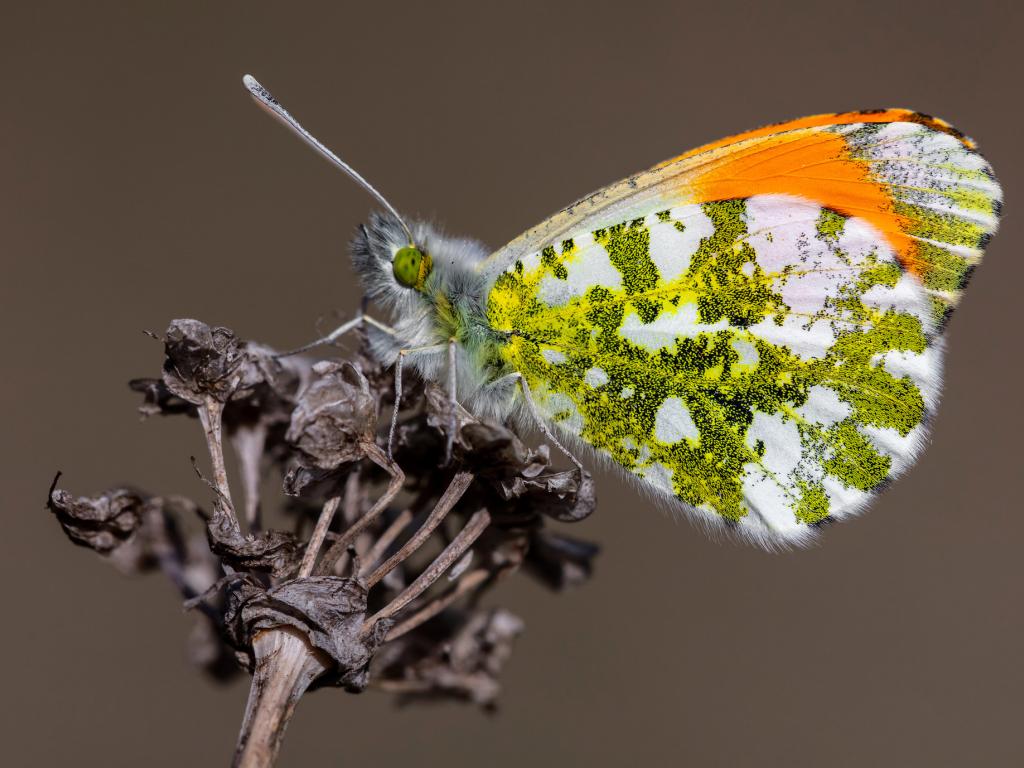
Diet
- Adults: Nectar from various flowers, including bluebell, bramble, bugle, cuckooflower, dandelion, garlic mustard, and others.
- Caterpillars: Feed primarily on plants in the cabbage family (Brassicaceae), with favorite species including:
- Cuckooflower (Cardamine pratensis)
- Garlic mustard (Alliaria petiolata)
- Hedge mustard (Sisymbrium officinale)
- Other crucifers
The caterpillars mainly eat developing seed pods, but will also consume flowers and leaves. They are cannibalistic, which is why females typically lay only one egg per plant.
Additional Facts
- Male orange-tips have distinctive orange wingtips, while females lack this coloration.
- Both sexes have mottled green underwings that provide excellent camouflage when resting.
- The orange coloration in males may serve as a warning to predators, indicating the butterfly is unpalatable due to mustard oils accumulated from its larval diet.
- Females are more selective about egg-laying sites, carefully choosing suitable host plants.
- The species has been expanding its range northward in recent decades, likely due to climate change.
The male is distinctive in appearance and cannot be mistaken for any other butterfly encountered in Britain or Ireland. It has bright orange ‘thumbprints’ on the edge of the upper surface of the forewings, tipped with black. In the female, the area of black is slightly larger and there is no orange. As such, the female Orange Tip may appear to resemble a Small White when viewed from above, but the mottled green and white underwing (hind wing only) is diagnostic.
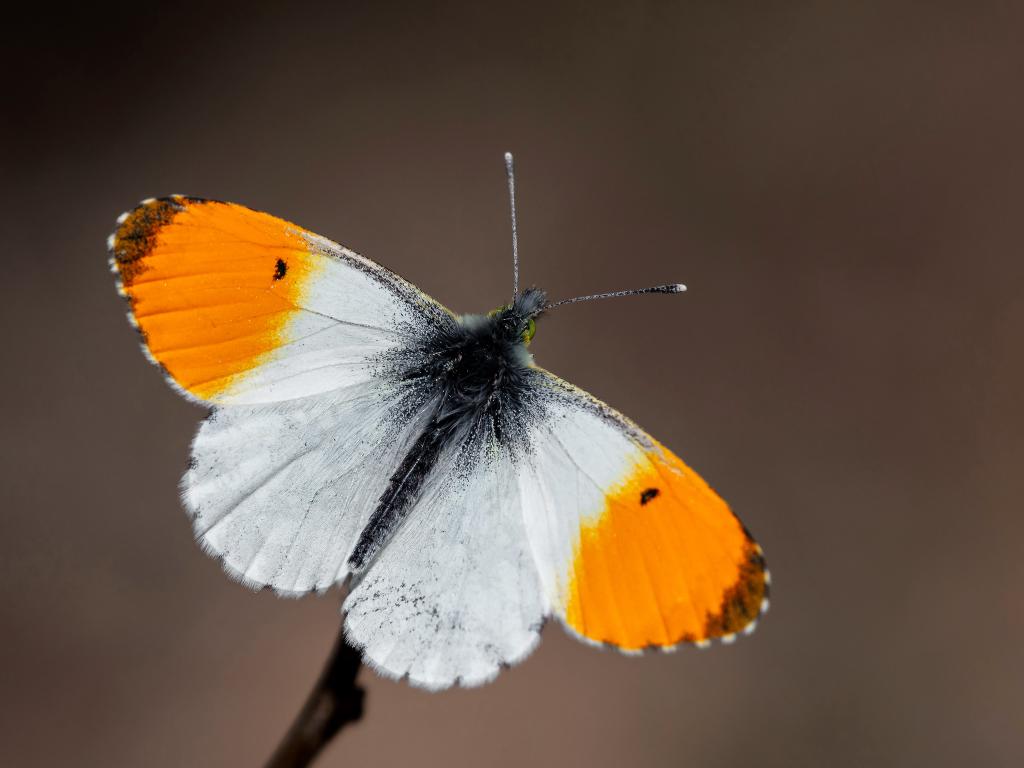
Male Orange Tips patrol in search of females and are highly conspicuous because of the orange tips to their wings. These serve to alert potential predators to the distasteful nature of this species, something that results from the mustard oils accumulated within the body during the caterpillar stage. The undersides of the hind wings are mottled green and white. When at rest, these conceal the more brightly coloured forewings of the male. This green and white camouflage is especially effective when individuals perch on cow parsley.
Changes in the countryside, most notably the loss of hay and flood meadows, have reduced the abundance of cuckoo flower (once the favoured foodplant). Southern populations of Orange Tip now appear to be increasingly reliant on garlic mustard, a plant that can be abundant on damp roadside verges if an enlightened management approach is adopted by the local council.
Eggs are laid at the base of a flowerhead, often on a plant that is in full sun. However, it is unusual to find more than one egg on a single flowerhead (young Orange Tip caterpillars are cannibalistic) because the egg-laying females produce a pheromone which deters other females from laying an egg on the same flower.
As the caterpillars grow, they feed on the developing seed pods (and to a lesser extent the leaves, buds and flowers) of crucifers. In the garden, the crucifers often include honesty, dame’s violet, cuckoo flower and garlic mustard, although there is evidence to suggest that the caterpillars have poor survival rates on honesty and dame’s violet. Their grey-green colouration provides very effective camouflage.

